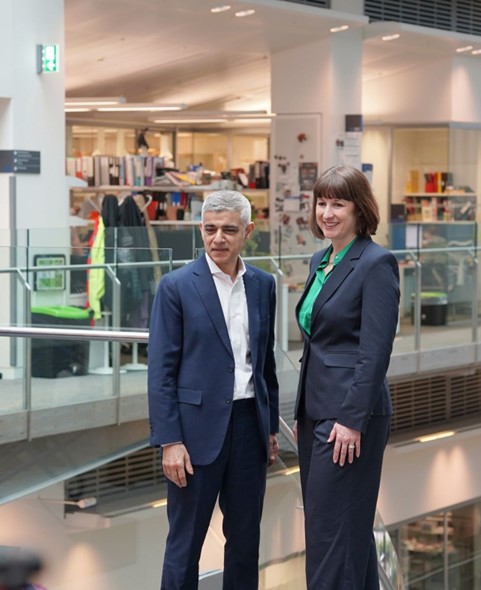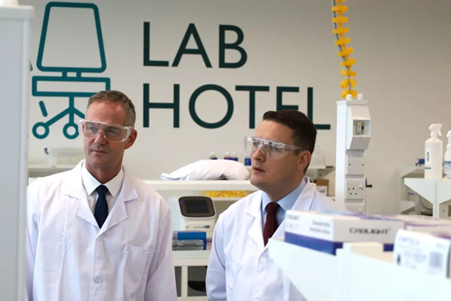Continuity and change: Labour’s life science strategy

The Labour Party launched their life sciences sector strategy at an event at the Stevenage Bioscience Catalyst organised by the BIA earlier this year.
As we head deeper into this long general election campaign, Herbie Lambden, Senior Policy and Public Affairs Executive at the BIA, asks where life sciences policy is at.
With the local elections fast approaching, UK politics finds itself in a mire of anticipation and uncertainty. Speculation about the timing of the general election is rife, with the earliest feasible date currently 20 June and others posturing that Sunak might hold out until January.
All the while, questions swirl around Starmer. The longer the wait for an election, the more we can expect pieces from the commentariat asking everything from how Labour will fill the non-dom shaped hole in their spending plans, which left-leaning think tank has the most influence on the party, and what Starmer can learn from Margaret Thatcher.
What is certain is Labour’s new strategy for our sector. Built upon extensive industry engagement and absorbing previous documents like Start Up, Scale Up, the BIA helped launch A Prescription for Growth in Stevenage alongside Wes Streeting and Peter Kyle back in January.
This momentum has continued in the party’s local election strategy, Power and Partnership, which majors on the contribution of the life science sector to local economies and employment in clusters outside London, from Glasgow to Tyneside.

Shadow Chancellor Rachel Reeves and Mayor of London Sadiq Khan visiting the Francis Crick Institute in April 2024 ahead of the London mayoral election on 2 May. (Francis Crick Institute)
On 2 May, parts of the country will head to the polls for the last time before a general election. With life sciences firmly on the agenda, what can industry expect from the remainder of 2024?
Who is the party of science?
Over the past 14 years, each Conservative administration has arguably become more pro-science than the last (perhaps with the exception of Liz Truss’s time in No10), with science and technology now considered in almost all policy, from planning rules to defence.
A Prescription for Growth shows Labour attempting to wrestle the mantle of the party of science and technology from their opponents.
Labour recall their history to achieve this, harking back to Harold Wilson’s 1963 pledge to grasp ‘the white heat of technology’ and achievements under Tony Blair that ‘laid the foundations of our life sciences success’ including the appointment of the first Science and Innovation Minister in 1998 and the introduction of R&D tax credits in 2000.

The Shadow Science Secretary (left) and Shadow Health Secretary (right) on a visit to Stevenage Bioscience Catalyst to launch the Labour Party's life science strategy. (Essex Live)
Conversely, the strategy blames Conservative government for signs of decline in UK life sciences over the past decade, criticising the churn of science ministers and pointing to the UK’s share of global pharmaceutical R&D halving between 2012 and 2020.
Whether due to mistakes in government or macroeconomic factors, it is clear that life sciences will be a political playing piece in the run-up to the next general election.
Continuity
While containing plenty of barbed pre-election rhetoric targeting the Conservative Party, Labour’s strategy avoids throwing the baby out with the bathwater, retaining those policies and strategies which have been successful over the past 14 years.
The Life Sciences Vision is one key source of continuity. Labour have committed to the goals of the vision which have guided life sciences policy since 2021, describing it as a ‘useful starting point’ that the party would build upon by rolling out an implementation plan to ‘unblock the innovation pipeline’.
Labour have also pledged to retain the current structure and at least the current rates of R&D tax reliefs over the next Parliament. This will provide stability for innovative life science companies that have seen too many regime changes over the five years from December 2021, as the BIA’s Finance and Tax Advisory Committee (FTAC) has made clear.
Further points of continuity include support for the Government’s allocation of £520 million for life sciences manufacturing and delivering the work already underway to develop Secure Data Environments (SDEs) to enable secure access to NHS health data for researchers, as supported by this submission from the BIA.
Change
So what are the standout policies in Labour’s strategy for our sector? Although constrained by their self-imposed fiscal rules and a proclivity against revealing policy ideas in the run-up to an election, A Prescription for Growth does tell us where Labour will look to target support for our sector.
For a start, industrial strategy is well and truly back. A new Industrial Strategy Council will oversee this across government, with the Life Sciences Council and the Office for Life Sciences rearranged to fit into this new paradigm.
A further change to the machinery of government would come with the formation of a Regulatory Innovation Office, bolstered by a ‘plan for procurement, adoption and spread of new technologies’ to provide a clear pathway into the NHS for innovative products.
Labour’s emphasis on long-termism also shines through, with the previously announced policy of 10-year budgets for R&D funding bodies including UKRI. The party also calls for a UK equivalent to the French Tibi scheme to channel pension fund investment into growth assets, as long called for by the BIA, and a technology transfer ‘founder track’ to help innovative spin-outs retain more of their equity.
What next?
‘This plan offers a start, not an end, to an ongoing conversation to map out the future of British life sciences between government, business and our universities’. This is how Shadow Chancellor Rachel Reeves chose to use her foreword, underlining that Labour’s life science policy is iterative and that industry engagement will continue.
We won’t see Labour’s final manifesto until a general election has been called. While the party is clearly taking life sciences seriously, as a detailed sector blueprint, we shouldn’t expect all of A Prescription for Growth to feature.
The strategy also leaves us knowing much more about the opposition’s thinking than the Government’s. This will change as we edge closer to the election – stay tuned for further analysis from the BIA once we can compare like for like.
For all the bluster of pre-election politicking, the main takeaway is one of consensus around the value of UK life sciences and the merit of time-proven policies like R&D tax credits and institutions such as OLS. Perhaps, as former Science Minister George Freeman has championed, it is this cross-party agreement that stands us the best chance of achieving science superpower status.
For a comprehensive rundown of Labour’s policies for the life sciences sector, from manufacturing to health data, read this BIA briefing.
.png)
.png)